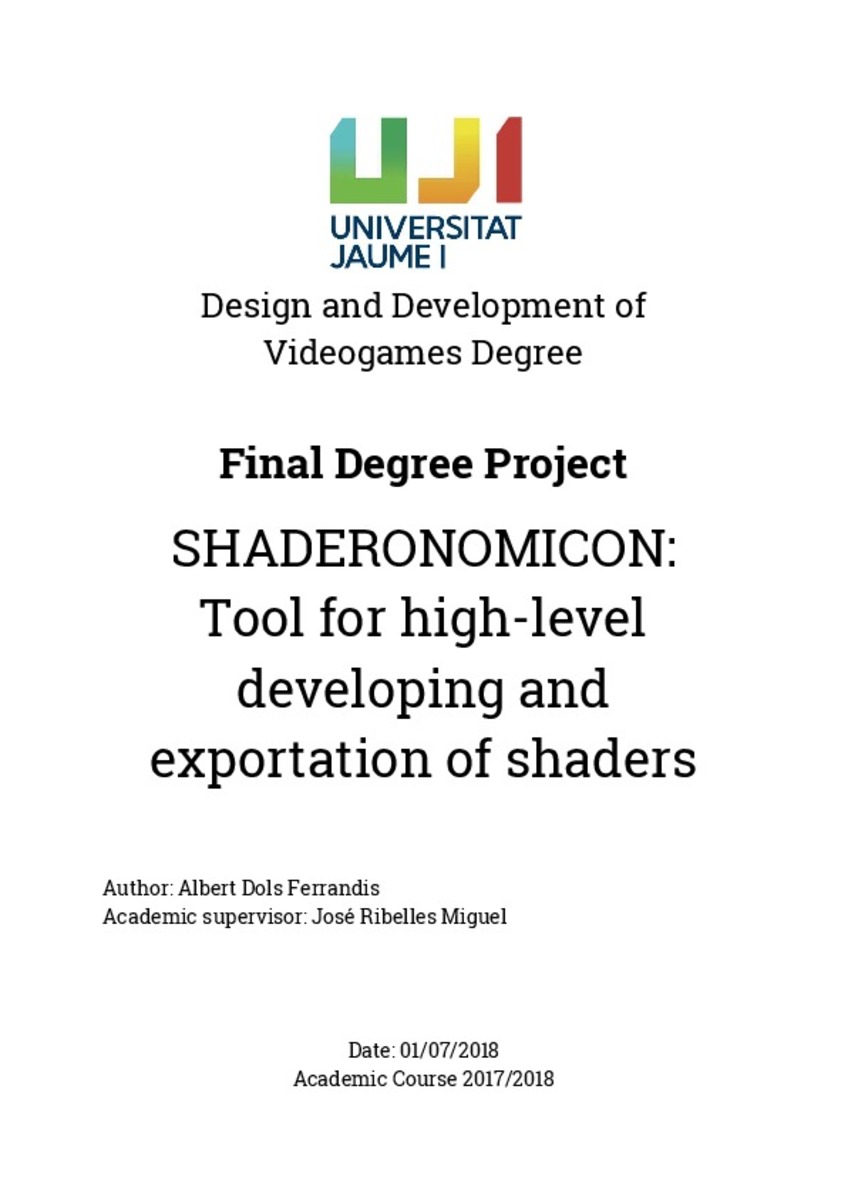Mostrar el registro sencillo del ítem
Shaderonomicon: Tool for high-level developing and exportation of shaders
| dc.contributor.author | Dols Ferrandis, Albert | |
| dc.contributor.other | Ribelles Miguel, José | |
| dc.contributor.other | Universitat Jaume I. Departament de Llenguatges i Sistemes Informàtics | |
| dc.date.accessioned | 2019-01-23T12:42:03Z | |
| dc.date.available | 2019-01-23T12:42:03Z | |
| dc.date.issued | 2018-07 | |
| dc.identifier.uri | http://hdl.handle.net/10234/180029 | |
| dc.description | Treball final de Grau en Disseny i Desenvolupament de Videojocs. Codi: VJ1241. Curs acadèmic: 2017/2018 | ca_CA |
| dc.description.abstract | Computer graphics is a branch of computer science that involves the treatment of everything that could appear on a screen. In the past years, this field has become one of the most important for video game developers, as it provides a tool for easy but powerful optimization solutions, and a huge improvement in visual quality. As interesting as it may sound, the greatest barrier to learn about it is the difficulty of its intern calculations and structure. As it requires not only to learn/adapt oneself to a programming language (in this case, nvidia CG is a C-based language), it also requires more advanced mathematical knowledge, regarding matrix operations. Fortunately, in the recent years, this barrier was tightened by tools that use an object-based programming, the node-based shader edition. This type of edition allows the user to create shaders in a more visual way, using objects with linkable properties, and let us see the result in real-time. This type of tool has overcomed the hurdle of using a programming language, but it still requires specific mathematical knowledge to dig out its full potential. An example of this type of tool is the Shader Graph[1], the node-based shader editor included inside Unity3D[2]. Shaderonomicon is a tool which aims to surpass the previously mentioned limitations, and give access to any developer to basic shader edition, in an intuitive and easy way. By using this application, one can understand which basic properties have a texture[3], normal map[4], or how lighting models affect the overall quality of the shader’s output, and how all of these features interact with each other. The target audience of Shaderonomicon involves anyone without prior shader knowledge, who wants to learn in a direct way how does a shader works, and experiment with basic features without writing a line of code. Because of its easy-to-export and multi-platform operability, Unity3D is the best platform, not only to implement the application’s systems, but also the most efficient one for the shader to be exported to. | ca_CA |
| dc.format.extent | 54 p. | ca_CA |
| dc.format.mimetype | application/pdf | ca_CA |
| dc.language.iso | eng | ca_CA |
| dc.publisher | Universitat Jaume I | ca_CA |
| dc.rights | Atribución-NoComercial-CompartirIgual 4.0 Internacional | * |
| dc.rights.uri | http://creativecommons.org/licenses/by-nc-sa/4.0/ | * |
| dc.subject | Grau en Disseny i Desenvolupament de Videojocs | ca_CA |
| dc.subject | Grado en Diseño y Desarrollo de Videojuegos | ca_CA |
| dc.subject | Bachelor's Degree in Video Game Design and Development | ca_CA |
| dc.subject | computer graphics | ca_CA |
| dc.subject | shader development | ca_CA |
| dc.subject | CG shader coding | ca_CA |
| dc.subject | Unity3D | ca_CA |
| dc.title | Shaderonomicon: Tool for high-level developing and exportation of shaders | ca_CA |
| dc.type | info:eu-repo/semantics/bachelorThesis | ca_CA |
| dc.educationLevel | Estudios de Grado | ca_CA |
| dc.rights.accessRights | info:eu-repo/semantics/openAccess | ca_CA |
Ficheros en el ítem
Este ítem aparece en la(s) siguiente(s) colección(ones)
-
Grau en Disseny i Desenvolupament de Videojocs [262]
VJ1241








